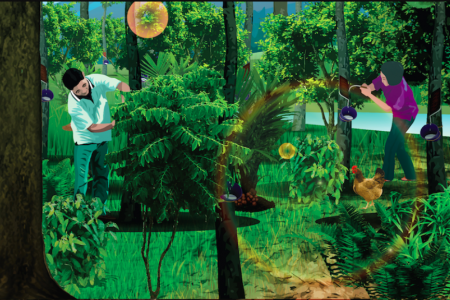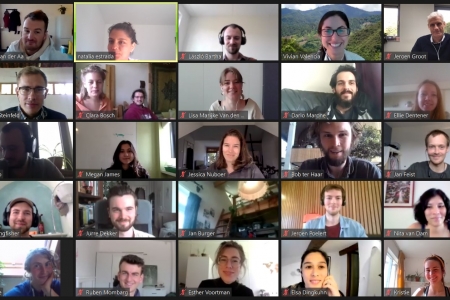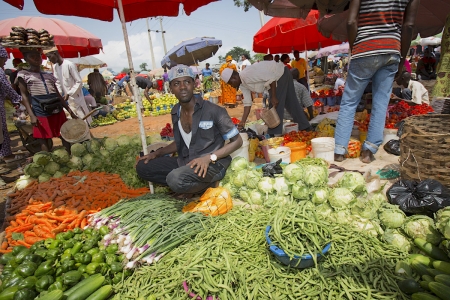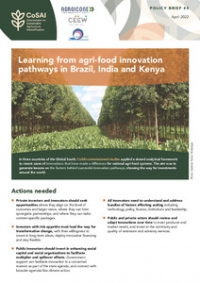The current pandemic is proving the urgent need to find more inclusive, holistic, sustainable and resilient alternative pathways for development. Demanding a different mindset, toolboxes, and way of working together. Besides, it requires people that embrace (rather than running away from) complexity and systems thinking!
Farming Systems Ecology Group -FSE and the Division of Human Nutrition and Health -HNH at WUR have a long history of collaboration with The Alliance of Bioversity and CIAT. Through different CGIAR Research Programs (Water, Land and Ecosystems and Agriculture for Nutrition and Health), researchers from both institutions are working together to identify the methods, models, metrics and tools that can help to navigate foodscapes towards more sustainable futures. But this knowledge needs to be in the hands of the future foodscapes managers and promoters.
Consequently, Vivian Valencia and Rogier Schulte at FSE developed and lead the seven-week course "Methodologies for Reading Sustainable Foodscapes". The course is intended to equip students with the right methodologies and toolboxes and critical thinking for diagnosing, planning, and managing multifunctional and sustainable foodscapes.
The 47 students from Europe, Asia, Africa and Latin America quickly adapted and adjusted to the challenges posed by COVID, requiring to swiftly transition from in-person to virtual classroom teaching. During the seven weeks, students actively engaged and worked with real case studies from the Global Network of Lighthouse Farms, a global outdoor classroom and laboratory on sustainable foodscapes.
Elise Talsma, Jeroen Groot, and Natalia Estrada Carmona worked with students during one week on the Nutrition-Sensitive Landscapes - NSL approach applied in three contrasting sites: Zambia, Vietnam and Kenya. The NSL approach "espouses the use of a systems- oriented, place-based and multi-disciplinary approach to analyze the integrated pathways leading to improvements in well-being, income and nutrition livelihood outcomes and in ecosystem services, especially for marginalized and vulnerable populations".
Assessing trade-offs and synergies is at the heart of the NSL multi-disciplinary approach. Through very pragmatic examples, Elise, Jeroen and Natalia showed how those can be assessed at the farm-household up to the landscape level and to answer questions linked to nutrition, ecosystem services, gender, and agricultural production. Here, students learned that rather than thinking in isolated science domains, like nutrition, conservation, agriculture, and governance, efforts to improve farm and landscape functioning are better planned jointly. The future managers and project developers can now lever several metrics, models and methods tested and developed through the WUR-The Alliance collaboration in multifunctional foodscapes!
The radical change that the food systems require starts from forming the minds of the young and future leaders. Nonetheless, educational programs mainly developed to train students to address the complexity and trade-offs faced when fostering multifunctionality, and sustainable development remain rare. The Alliance and WUR are committed to keep working together to fill this academic gap.
---
Thrive blog is a space for independent thought and aims to stimulate discussion among sustainable agriculture researchers and the public. Blogs are facilitated by the CGIAR Research Program on Water, Land and Ecosystems (WLE) but reflect the opinions and information of the authors only and not necessarily those of WLE and its donors or partners.
WLE and partners are supported by CGIAR Trust Fund Contributors, including: ACIAR, DGIS, FCDO, SDC, Sida and others.


















